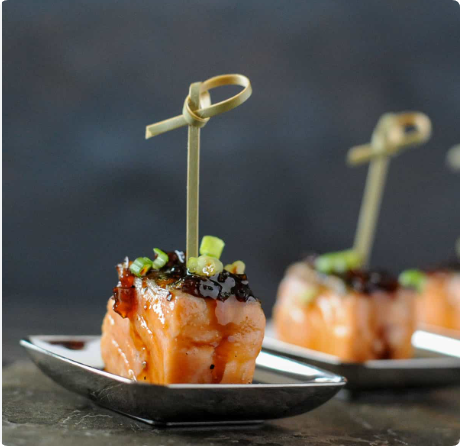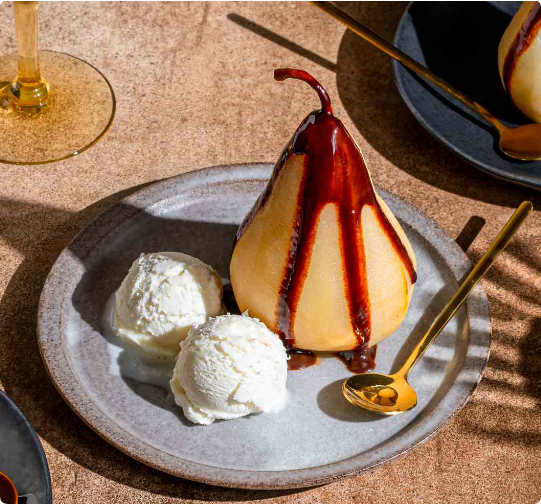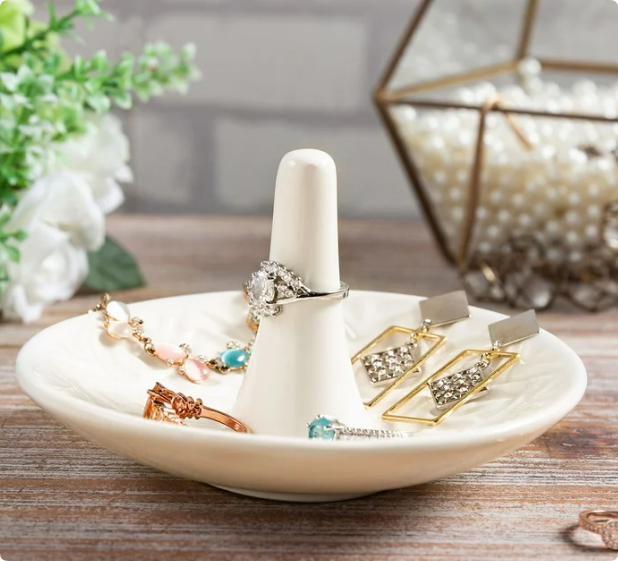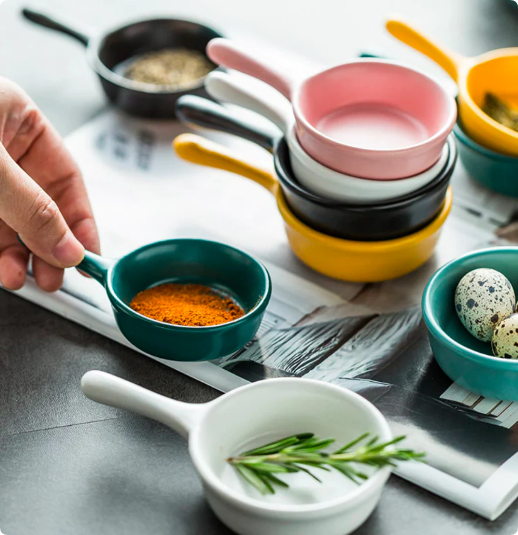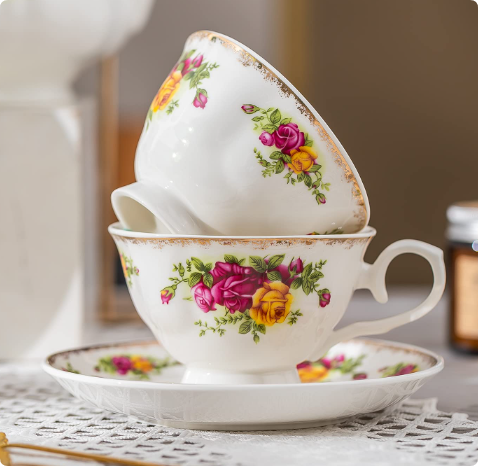Ceramic dishes (dish) are essential tableware items, typically used for serving appetizers, desserts, or sauces. For B2B buyers, understanding the standard size and uses of ceramic dishes can help make more informed purchasing decisions, especially when targeting global market demands and selecting suitable products.
In this article, we will explore the standard sizes of ceramic dishes, the differences between dishes and plates in terms of size and usage, the common uses of different dish types, and global market demands for dish sizes. EKA Ceramic focuses on providing customized ODM and OEM services for supermarkets, restaurant suppliers, large retailers, and small-batch buyers worldwide, helping buyers efficiently manage their supply chains.
1. Why Dish Size Is Crucial for B2B Buyers
Dish size directly affects product marketability, procurement costs, and logistics efficiency. Choosing the right size can not only control inventory and transportation costs but also enhance the dining experience for end consumers. Different regions and cultures have varying preferences for dish sizes, making it essential for B2B buyers to understand these needs.
For example, the Asian market tends to prefer smaller dishes, while Western markets favor medium to large sizes. These differences influence the specifications of products in bulk purchases and their market performance.
2. Differences Between Dishes and Plates in Size and Usage
Although “dish” and “plate” are often used interchangeably, there are clear distinctions in size and usage, especially when it comes to purchasing tableware. Understanding these differences is critical for B2B buyers.
a) Size Differences
- Dish: Dishes are generally smaller, used for serving small portions of food, sauces, desserts, or appetizers. The typical diameter of a dish ranges from 8 cm to 15 cm (3 to 6 inches).
- Plate: Plates are usually larger and are used for main courses. A plate’s common diameter ranges from 20 cm to 30 cm (8 to 12 inches). Plates are more versatile, suitable for larger portions of food, such as main dishes and salads.
b) Usage Differences
- Dish: Dishes are primarily used to serve appetizers, desserts, or sauces in small quantities. They are ideal for multi-course dining settings or more formal meals, where a refined presentation is important, particularly in upscale dining.
- Plate: Plates are mainly used for serving main courses like meats, fish, vegetables, or main course salads. Their larger size makes them suitable for all types of formal meals, especially for main courses.
Table: Size and Usage Comparison of Dishes and Plates
| Details | Dish | Plate |
|---|---|---|
| Size | 8 cm to 15 cm (3 to 6 inches) | 20 cm to 30 cm (8 to 12 inches) |
| Usage | Appetizers, desserts, sauces, small portions of food | Main courses, salads, large portions of food |
| Dining Scene | Upscale restaurants, banquets, family gatherings | Daily dining, restaurant meals,family dining |
| Market Demand | Smaller sizes preferred in Asia | Medium to large sizes preferred in Western markets |
As shown in the table above, dishes and plates differ in both size and usage, depending on the type of food being served and the dining setting. B2B buyers need to consider market demand when selecting the appropriate product mix.
3. Common Types of Ceramic Dishes and Their Standard Sizes
Ceramic dishes come in a wide range of sizes, designed for different purposes. Below are some common types of ceramic dishes and their standard sizes to help B2B buyers choose the right dishes for various settings.
a) Appetizer Dish
Appetizer dishes are typically used for serving small portions of appetizers or snacks. The standard size is 10 to 12 cm (4 to 5 inches), suitable for formal dining or multi-course meals.
b) Dessert Dish
Dessert dishes are used for serving desserts or small pastries, with a standard size of 12 to 14 cm (5 to 5.5 inches). These dishes are often seen in upscale restaurants and home dining settings, where elegance is prioritized.
c) Sauce Dish
Sauce dishes are small and ideal for serving condiments or dipping sauces. The standard size is 8 to 10 cm (3 to 4 inches). They are frequently used in Asian dining cultures, often paired with small servings of sauce.
d) Decorative Dish
Decorative dishes are primarily used to present small items or treats, with a standard size of 8 to 10 cm (3 to 4 inches), often seen in upscale restaurants and family gatherings.
e) Tea Dish
Tea dishes are typically paired with teacups to catch residual tea, with a standard size of 12 to 15 cm (4.7 to 6 inches). They are commonly used in European and Asian tea cultures.
4. Global Market Preferences for Ceramic Dish Sizes
Global markets have distinct preferences for dish sizes. For instance, consumers in Western countries prefer larger-sized tableware, while the Asian market leans toward smaller dishes. Understanding these regional preferences is crucial for B2B buyers when making purchasing decisions. Below is a summary of dish size preferences in different markets:
| Market | Preferred Dish Size | Typical Dish Type | Cultural and Dining Habits |
|---|---|---|---|
| USA | 12 to 15 cm (5 to 6 inches) | Dessert dishes, decorative dishes | Large portions of desserts, focus on aesthetics and functionality |
| Europe | 10 to 12 cm (4 to 5 inches) | Appetizer dishes, dessert dishes | Preference for elegant, refined tableware |
| China | 8 to 10 cm (3 to 4 inches) | Sauce dishes, small appetizer dishes | Small dishes, paired with a variety of sauces |
| Japan | 8 to 10 cm (3 to 4 inches) | Sauce dishes, tea dishes | Harmony between tableware and food, small and delicate |
The preferences for dish sizes vary greatly by region, so buyers should tailor their procurement strategies accordingly.
5. EKA Ceramic’s Customized Ceramic Dish Services
As a leading global ceramic product manufacturer, EKA Ceramic provides a range of customization services for B2B buyers, including ODM for large orders and OEM for smaller quantities.
a) ODM Customization for Large Orders
For supermarkets, restaurant suppliers, and large retailers, EKA offers bulk ODM customization services. Buyers can choose standard-sized dishes or customize specific designs according to market needs to enhance brand competitiveness.
b) OEM Customization for Small Orders
Small-batch buyers can take advantage of EKA’s OEM services, customizing the design, size, and pattern of ceramic dishes to meet the personalized needs of different markets.

